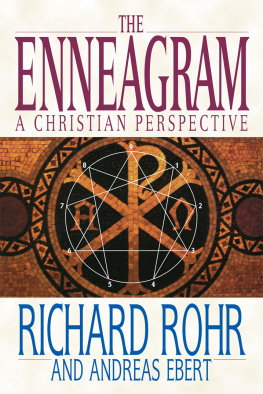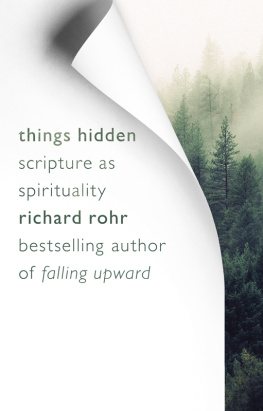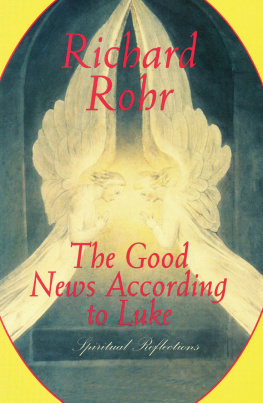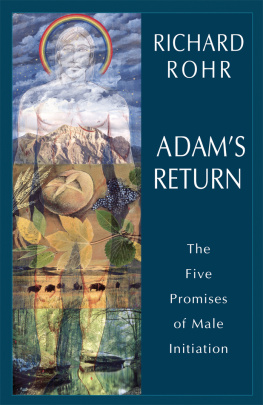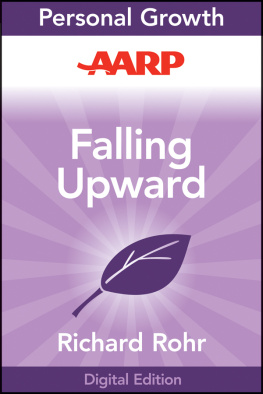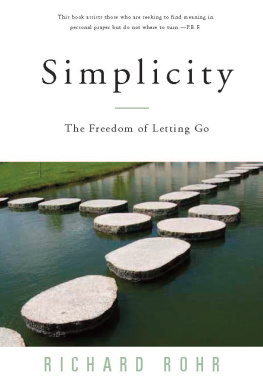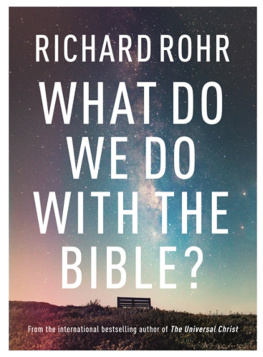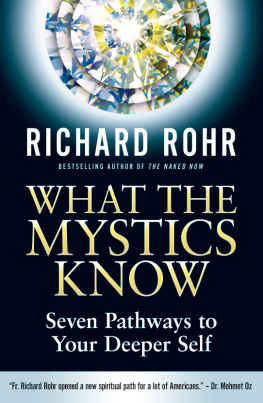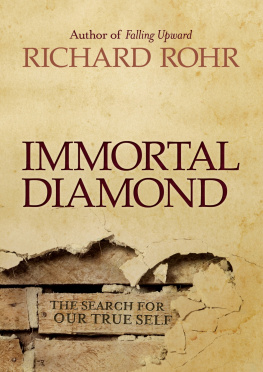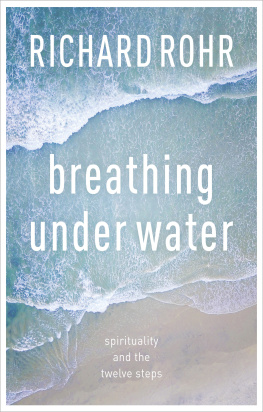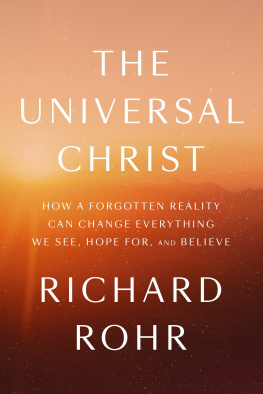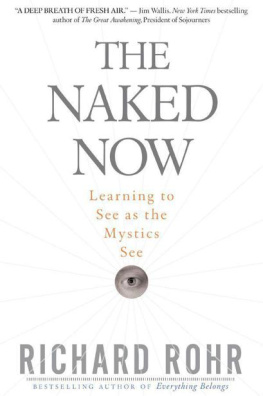Richard Rohr - The Enneagram: A Christian Perspective
Here you can read online Richard Rohr - The Enneagram: A Christian Perspective full text of the book (entire story) in english for free. Download pdf and epub, get meaning, cover and reviews about this ebook. year: 2001, publisher: Crossroad, genre: Religion. Description of the work, (preface) as well as reviews are available. Best literature library LitArk.com created for fans of good reading and offers a wide selection of genres:
Romance novel
Science fiction
Adventure
Detective
Science
History
Home and family
Prose
Art
Politics
Computer
Non-fiction
Religion
Business
Children
Humor
Choose a favorite category and find really read worthwhile books. Enjoy immersion in the world of imagination, feel the emotions of the characters or learn something new for yourself, make an fascinating discovery.
- Book:The Enneagram: A Christian Perspective
- Author:
- Publisher:Crossroad
- Genre:
- Year:2001
- Rating:4 / 5
- Favourites:Add to favourites
- Your mark:
- 80
- 1
- 2
- 3
- 4
- 5
The Enneagram: A Christian Perspective: summary, description and annotation
We offer to read an annotation, description, summary or preface (depends on what the author of the book "The Enneagram: A Christian Perspective" wrote himself). If you haven't found the necessary information about the book — write in the comments, we will try to find it.
The Enneagram: A Christian Perspective — read online for free the complete book (whole text) full work
Below is the text of the book, divided by pages. System saving the place of the last page read, allows you to conveniently read the book "The Enneagram: A Christian Perspective" online for free, without having to search again every time where you left off. Put a bookmark, and you can go to the page where you finished reading at any time.
Font size:
Interval:
Bookmark:


This Printing: June 2016
www.CrossroadPublishing.com
Original German edition published as Das Enneagram: Die 9 Gesichter der Seele
copyright Claudius Verlag, Munich, 1989
Revised and expanded German edition copyright Claudius Verlag, Munich, 1999
English translation of the first German edition published as Discovering the Enneagram: An Ancient Tool for a New Spiritual Journey, copyright 1990 by the Crossroad Publishing Company.
This translation of the revised and expanded German edition copyright 2001 by the Crossroad Publishing Company.
All rights reserved. No part of this book may be reproduced, stored in a retrieval system, or transmitted, in any form or by any means, electronic, mechanical, photocopying, recording, or otherwise, without the written permission of the Crossroad Publishing Company.
Front cover art: A mandala in mosaic at Ascension Church, in Oak Park, Illinois Regina Kuehn.
Printed in the United States of America
Library of Congress Cataloging-in-Publication Data
Rohr, Richard.
[Enneagram. English]
The enneagram: a Christian perspective / by Richard Rohr and Andreas Ebert.
p. cm.
Includes bibliographical references and index.
ISBN 978-0-8245-0121-1
1. Enneagram. 2. Spiritual life-Catholic Church. I. Ebert, Andreas. II. Title.
BX2350.3 .R6413 2001
248.2-dc21
2001002356
For our mothers
Eleanore Dreiling-Rohr
Renate Apfelgrn-Mayr
I am afraid to drive the demons from my life lest the angels also flee.
R. M. Rilke
And God showed me that sin will be no shame, but somehow honor for humanity.... Gods goodness makes the contrariness which is in us very profitable for us.
Blessed Julian of Norwich
The angels of darkness must disguise themselves as angels of light.
2 Corinthians 11:14
Contents
In the late summer of 1989 three books on the Enneagram appeared in German-speaking bookstores within the space of a few weeks. One of them was the first edition of this book. Since then more than three hundred thousand copies of it have been handed across shop counters, and the original text has been translated into many other languages. Richard Rohr and I have given numerous lectures and conferences on the Enneagram. The German Ecumenical Enneagram Working Group (based in Celle), which has more than five hundred members, has developed a lively organizational life. We have had the opportunity of getting to know other important Enneagram teachers and learning from them. And so it was high time to rework and update our book. But we have given up any really grand-scale solution. That would have meant rewriting the book and working into it the flood of literature that has since come out. We have decided instead on a small-scale solution, since our readers can acquire an overview of the Enneagram itself through other approaches and perspectives. Our book has remained substantially the same. We have inserted only the new insights that we ourselves have come upon and that have become especially important to us. This relates especially to the history of how the Enneagram came into being. Since the first edition we have become convinced that the Enneagram does not derive from medieval Islamic (Sufi) sources, but can be traced back, at least in part, to the Christian desert monk Evagrius Ponticus (d. 399) and the Franciscan Blessed Ramn Lull (12361315). Above and beyond that, we have made a few stylistic improvements.
The original text of this book has an unusual prehistory. In 1985 when I visited Richard Rohr, he was still the leader of the New Jerusalem family community in Cincinnati. He first introduced me to the Enneagram, which he was using in the framework of pastoral care for his community. At that point there was scarcely anything in print on the Enneagram.
In the summer of 1988 I had a chance to take part, at Richard Rohrs new place, the Center for Action and Contemplation in Albuquerque, New Mexico, in an Enneagram workshop lasting several days. Meanwhile the situation in the United States had changed. Since the mid-1980s a whole series of books on the Enneagram had appeared; many psychologists and theologians were now of the opinion that the Enneagram was an excellent tool to help people on their way to spiritual and mental growth.
After my return from the United States I hesitated whether to translate one of the Enneagram books that had been published in America or instead make a book out of Richard Rohrs taped workshop, with his impromptu talks. For various reasons I chose the latter option. Richard Rohr was already familiar to the German-speaking public thanks to his books The Wild Man and The Naked God. I felt that his style of lecturingnot always systematic, but lively and spontaneouswas more appropriate for communicating the Enneagram than a presentation with high scholarly pretensions.
In addition, I have also taken pains to work up the literature that has since appeared. This applies above all to the first and third parts of this book. Beyond that, I had already gathered a series of my own experiences with the Enneagram, and they too have made their way into this edition.
While working on this book, I learned that here and thereand unbeknownst to anyonein the German-speaking world, people had been dealing with the Enneagram. A number of Jesuits and the Catholic Communities of Christian Life had used it for retreats and the training of spiritual counselors. In particular, the final product owes essential impulses to Hildegard Ehrtmann, whose participation in Enneagram work was crucial.
Finally, I have made use here of the feedback from one of the first German Enneagram conferences, which took place in 1989 at Schloss Craheim in Lower Franconia. Almost seventy participants, including a number of pastors and therapists, critically examined the concept and gave me valuable feedback.
Special thanks must go to Marion Kstenmacher, who was an editor at Claudius Verlag back then. She accompanied the creation of the book from the beginning and kept spurring it on with her enthusiasm. Since then she herself has become an internationally known and respected Enneagram teacher and author.
As I did before, today I wish that this book may have readers ready to dare to take the exciting and laborious path to self-knowledge and conversion. As I did before, I see a danger of a typological model like the Enneagram being misused to thoughtlessly force oneself and others into a schematic mold, and thereby not grow, but become fossilized. When misused, the Enneagram can be more of a curse than a blessing.
Self-knowledge is tied in with inner work, which is both demanding and painful. Change occurs amid birth pangs. It takes courage to walk such a path. Many avoid the path of self-knowledge because they are afraid of being swallowed up in their own abysses. But Christians have confidence that Christ has lived through all the abysses of human life and that he goes with us when we dare to engage in sincere confrontation with ourselves. Because God loves us unconditionallyalong with our dark sideswe dont need to dodge ourselves. In the light of this love the pain of self-knowledge can be at the same time the beginning of our healing.
The masters and soul guides of all spiritual traditions of the West and East have known that true self-knowledge is the presupposition of the inner journey. Teresa of Avila, the great Christian mystic, writes in her masterpiece
Next pageFont size:
Interval:
Bookmark:
Similar books «The Enneagram: A Christian Perspective»
Look at similar books to The Enneagram: A Christian Perspective. We have selected literature similar in name and meaning in the hope of providing readers with more options to find new, interesting, not yet read works.
Discussion, reviews of the book The Enneagram: A Christian Perspective and just readers' own opinions. Leave your comments, write what you think about the work, its meaning or the main characters. Specify what exactly you liked and what you didn't like, and why you think so.

